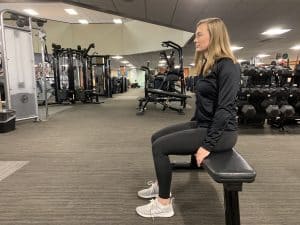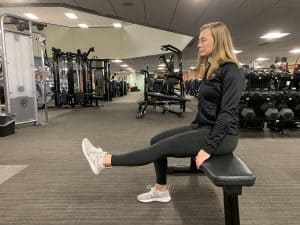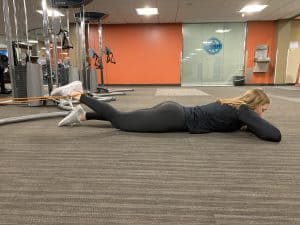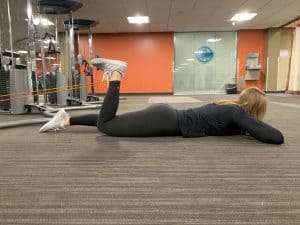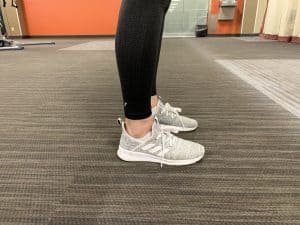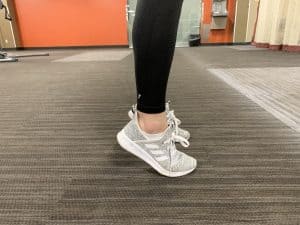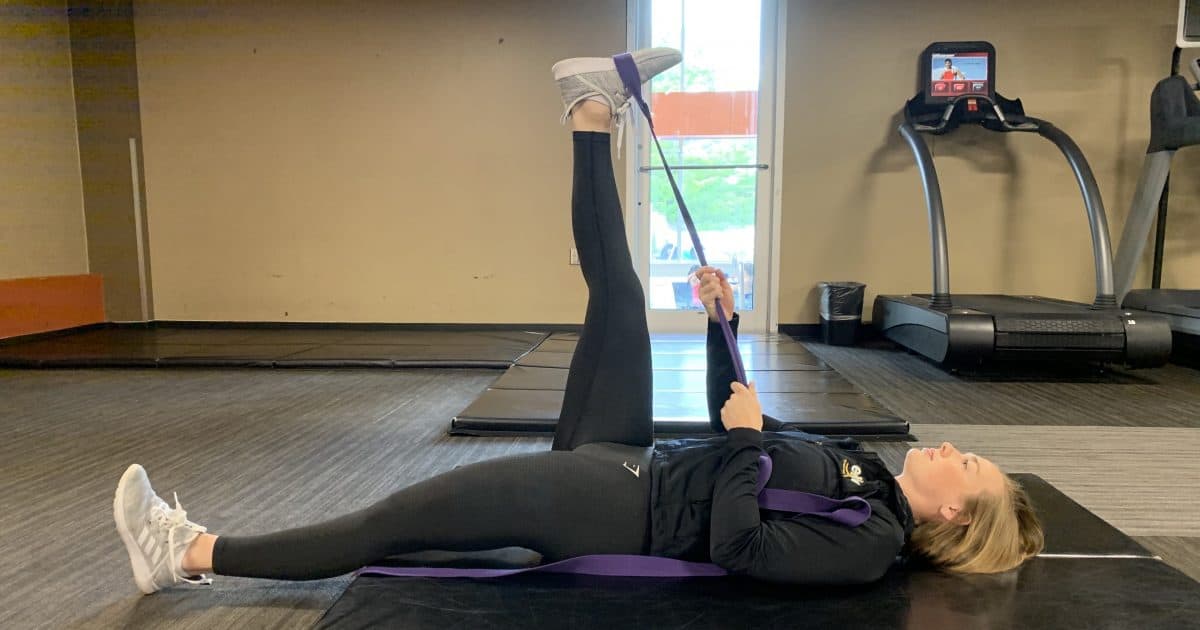
Many people experience knee injuries or knee pain throughout their life for various reasons. Whether you are recovering from a torn ligament, surgery, or tendonitis, getting back into exercise post-injury is essential to help improve strength and stability in the knee and prevent further injury. It is important to ease yourself back into exercises and start with improving mobility and flexibility of the knee joint before working on strengthening the muscles surrounding the knee. Here are some steps you can take to ensure your return to exercise after recovering from a knee injury goes smoothly and safely.
Flexibility and Mobility
After an injury, it is essential to regain range of motion in the joint affected by the injury. Foam rolling and stretching regularly can help do that. For a knee injury, we want to focus on loosening up the muscles surrounding the knee and hips to regain proper movement patterns during exercise.
Foam Rolling
Foam rolling is a self-myofascial release that mimics the effects of a massage and loosens the muscles. The benefits of massage, or self myofascial-release via foam rolling, include reduced muscle tension, faster healing of strained muscles and ligaments, and reduced muscle pain and swelling. Additionally, research suggests that foam rolling can increase joint range of motion at the ankle, knee, and hip. This increased range of motion will help prevent further injury. For knee pain and injury, foam rolling the calves, quadriceps, hamstrings, and IT band will help the muscles heal faster, reduce pain, and prevent further injury. When foam rolling, make sure you roll up and down the muscle in repetitive motion on one area of the muscle at a time and focus on areas that seem the most tight.
Calf
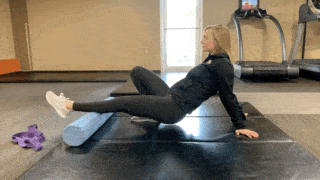
Quadriceps
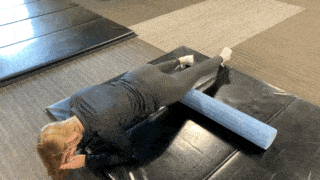
Hamstrings

IT Band
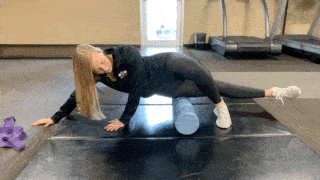
Stretching
In addition to foam rolling your calves, quadriceps, hamstrings, and IT band, stretching these muscles is essential to lengthen the muscle and improve range of motion around the knee and ankle joints. You want to hold each stretch for at least 30 seconds to give time for the muscle to loosen and stretch out.
Calf: Place your hands against the wall, extend one leg back and push that heel towards the ground.
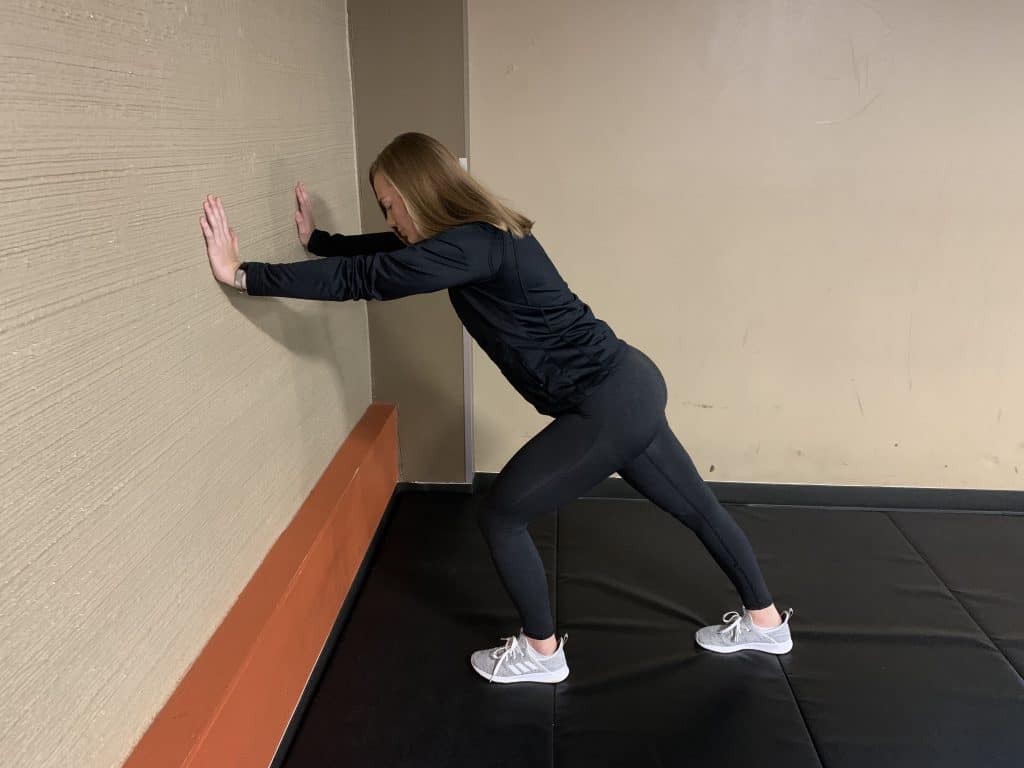
Quadricep: Balance on one leg, grab your opposite foot and pull it back towards your glutes.
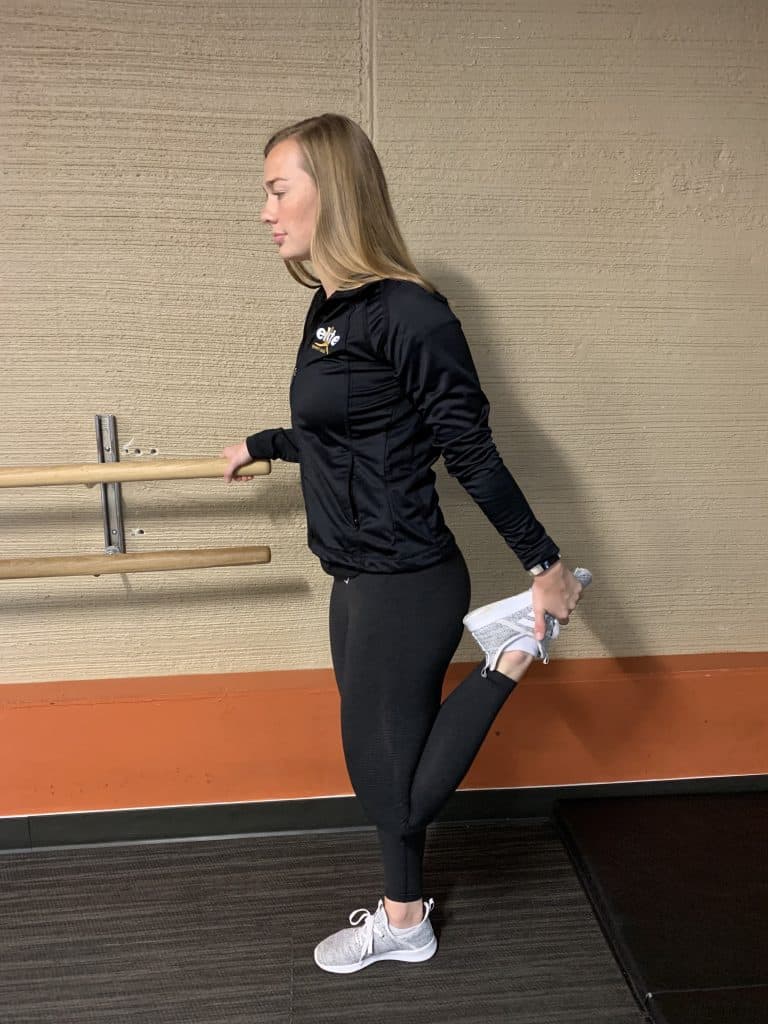
Hamstring: While lying on your back, use a strap or a wall to bring your foot in the air and attempt to straighten your leg until you feel a stretch in the back of your thigh.
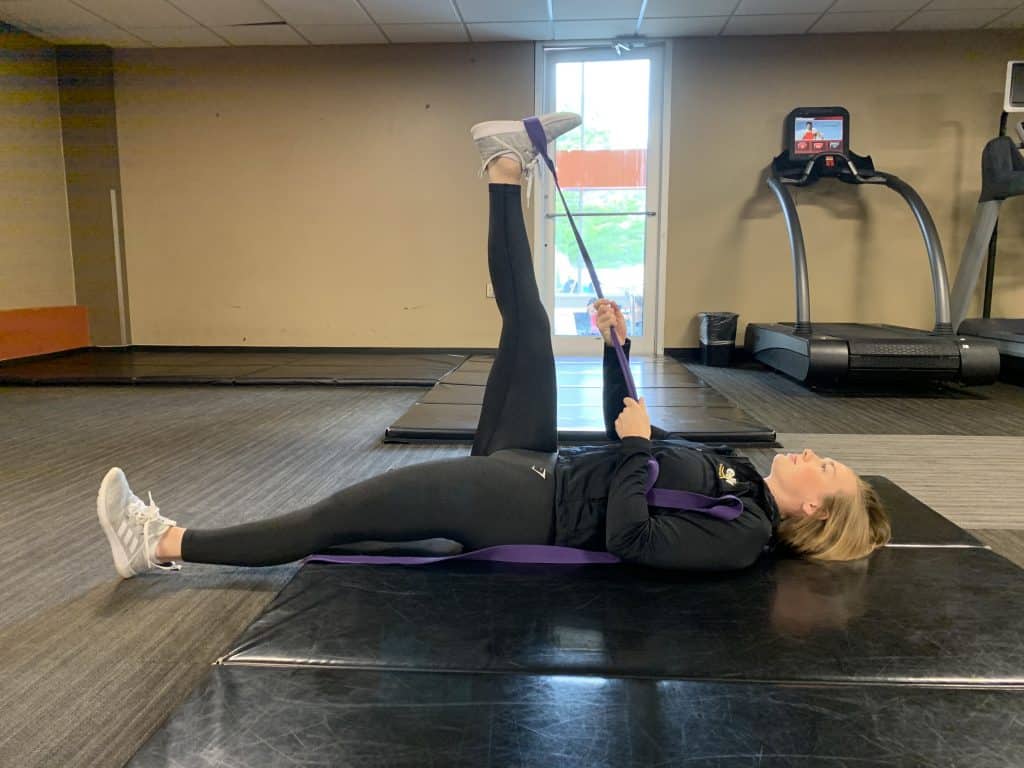
Figure Four Stretch: From a sitting or lying position, bring the ankle of one leg onto the front of the knee of the opposite leg, feeling the stretch in the glute and IT band.
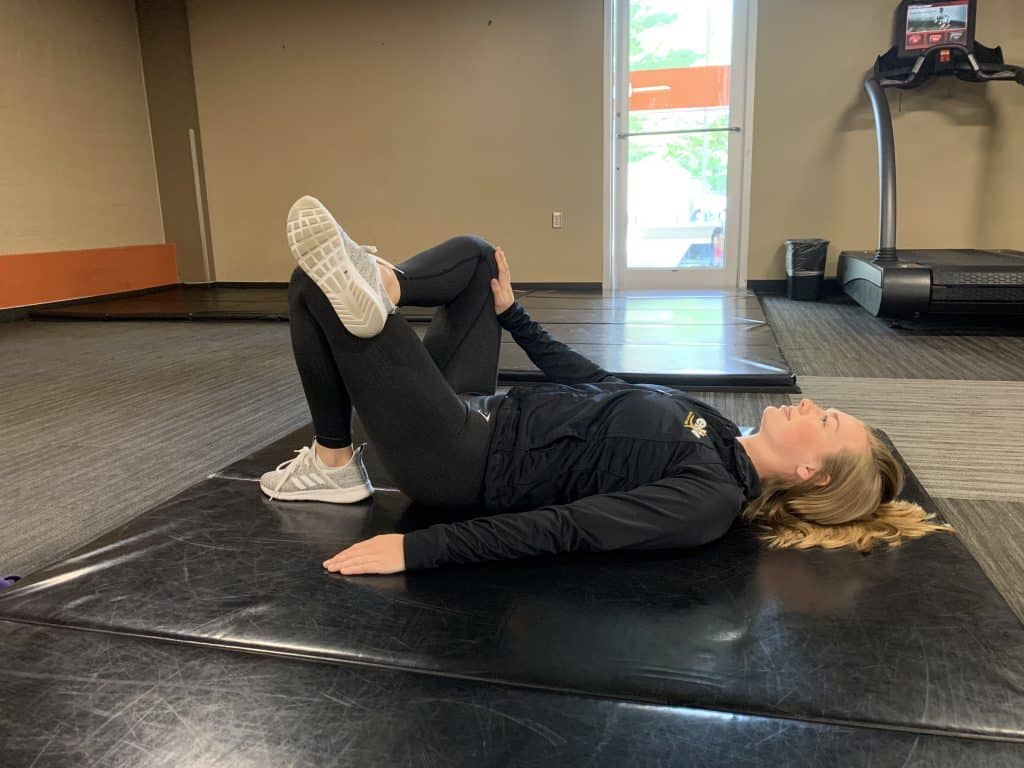
Stability & Strength
Before moving into higher intensity and heavy strength exercises, it is important to make sure the joint is stable. During the stability and balance exercises shown below, the muscles surrounding the ankle, knee, and hip all have to activate in order to keep you from falling. This helps strengthen those muscles and promotes the type of muscle engagement we need in order to have proper form when forming more complex exercises.
Balance
Balance for 20-30 seconds on each leg, repeat 2 more times per leg. After mastering balancing on solid ground, progress to balancing on uneven surfaces like a pillow, towel, or bosu ball to keep the exercise challenging.
Strength
The next step is to start strength training the muscles surrounding the knee including quadriceps, hamstrings, glutes, and calves. For strength exercises, you want to complete the movement 10-15 times and repeat those reps 3 times.
Quadriceps Extension: While sitting in a chair, start with your feet flat on the floor and then lift one foot up, squeezing the top of your thigh. To increase intensity, you may add an ankle weight or use a leg extension machine.
Hamstring Curl: Start lying on your stomach with a resistance band around the back of your ankle, next bring your heel towards your glutes and squeeze your hamstrings.
Calf Raises: Start with your feet flat on the floor, then go up on your toes and squeeze your calves before slowly releasing back down. To make the exercise more challenging, hold weights in your hands or do the exercise with the balls of your feet on a step.
Glute Bridges: Start by lying on your back with your feet flat on the floor a few inches away from your hips. Next, push through your heels to lift your hips off the ground and squeeze your glutes, then lower your hips back down to the ground. You want to keep your knees in line with your hips during the whole movement.
By incorporating these mobility, stability, and strength exercises into your work out program, you will promote proper recovery from a knee injury as well as prevent further injuries to the knee from happening.
If you would like personal assistance recovering from any kind of injury, I can help! I specialize in post-injury training. You can start with a FREE fitness consultation to discuss where you’re at and where you want to be.
Set up a Free Fitness ConsultationWritten by Alex White, Certified Personal Trainer at Elite Sports Club – Brookfield.
Alex has a B.S. in Psychology from the University of Wisconsin-Madison and is an American Council on Exercise Certified Personal Trainer. She specializes in Functional Training & Mobility, Adapted & Post-Injury Fitness, Strength Training & Weight Loss. Alex lives by the philosophy of “A healthy mind creates a healthy body, and vice versa.”
